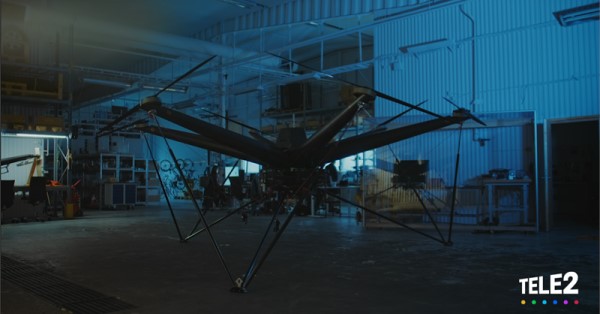Introduction
Tele2 AB, a leading figure in telecommunications, has joined forces with Nokia to provide AirForestry, a visionary in sustainable forest management, with a cutting-edge 5G private wireless network. This collaboration aims to revolutionize forest harvesting by utilizing large electric drones, fundamentally changing how forestry operations are conducted.
Challenges
The traditional methods of forest thinning and harvesting often lead to significant ground disturbance and collateral damage to surrounding trees. AirForestry’s innovative approach using electric harvester drones requires a reliable, high-capacity communication network, especially in remote forest areas where conventional coverage is absent. This network is crucial for managing the complex data and control systems of the drones, including real-time video transmission and precise drone navigation.
Solution
To address these challenges, Tele2 and Nokia’s partnership focuses on deploying a 5G private wireless network tailored to the needs of AirForestry. This network promises a stable, secure, and robust connection essential for handling high-capacity data and ensuring low-latency communication, which is critical for the effective control and operation of drones.
Watch the video about the project here.
Evidence
The initiative’s pilot phase, scheduled for 2024, is a crucial testbed to demonstrate the viability and effectiveness of this technology in real-world forestry operations. The success of this pilot is anticipated to pave the way for widespread adoption in the forestry industry.
Technology Choice
Nokia’s Digital Automation Cloud (DAC) is at the heart of this solution, offering a reliable and efficient platform that supports high bandwidth and low latency. This technology is critical for the digital transformation of the forestry industry, enabling new levels of operational efficiency and environmental sustainability.
Benefits
This innovative approach to forest thinning offers several benefits:
- Environmental Sustainability: The use of electric drones minimizes ground damage, preserving the forest floor and surrounding ecosystem.
- Operational Efficiency: Improved control and precision in forest thinning lead to higher yield and reduced waste.
- Cost-Effectiveness: Reducing the need for ground-based machinery cuts operational costs and minimizes the carbon footprint.
Industry Impact
The implementation of a 5G private wireless network in forestry is a game-changer. It showcases 5G technology’s potential to transform traditional industries and set new benchmarks for sustainability and efficiency.
Company’s Role
Tele2, with its commitment to innovation and sustainability, plays a crucial role in providing the necessary infrastructure and technological expertise. Their involvement underscores their dedication to creating a society where technological advancements lead to tangible environmental benefits.
Partner’s Role
Nokia’s contribution with its advanced 5G technology and digital infrastructure expertise is instrumental in realizing this ambitious project. Their experience in digital transformation and network management is key to overcoming the technical challenges involved.
Status
As of now, the project is in its pilot stage, with comprehensive testing and optimization processes underway.
Timeline
The pilot project is set to commence in 2024, with the expectation of extending the technology to broader commercial forestry operations upon its successful completion.
Endorsements
Statements from Tele2 and Nokia executives underline their enthusiasm for this groundbreaking project. Their vision aligns with the broader goals of sustainable industry practices and technological innovation.
Airforestry’s technology is undoubtedly revolutionary, and their vision is to make forest harvesting more efficient and sustainable which is groundbreaking. It is extremely gratifying to be part of this journey and contribute to the realization of completely new innovations. 5G and private wireless networks remove previous limitations and create unlimited business opportunities, and we look forward to more applications that can increase companies’ innovation and competitiveness, says Stefan Trampus, Executive Vice President B2B at Tele2.
Our drones require efficient and reliable data transmission to be able to handle all the data they send and receive when harvesting and thinning forests. We looked at different options regarding connectivity, but in the end a mobile private 5G network was the one that suited our specific needs best, says Olle Gelin, CEO and co-founder of Airforestry.
Nokia is thrilled to be part of this project partnering with Tele2. Airforestry’s approach to forestry is truly disruptive. It is resource-efficient and reduces damage on the ground level to an absolute minimum. One of the challenges is precise navigation of the drones and a state-of-the-art 5G private wireless network that is the perfect technology to support this application, says Stephane Haulbert, Nokia Enterprise Partners Business Leader in Europe.
For further details about Tele2’s initiatives, visit their official website.







































